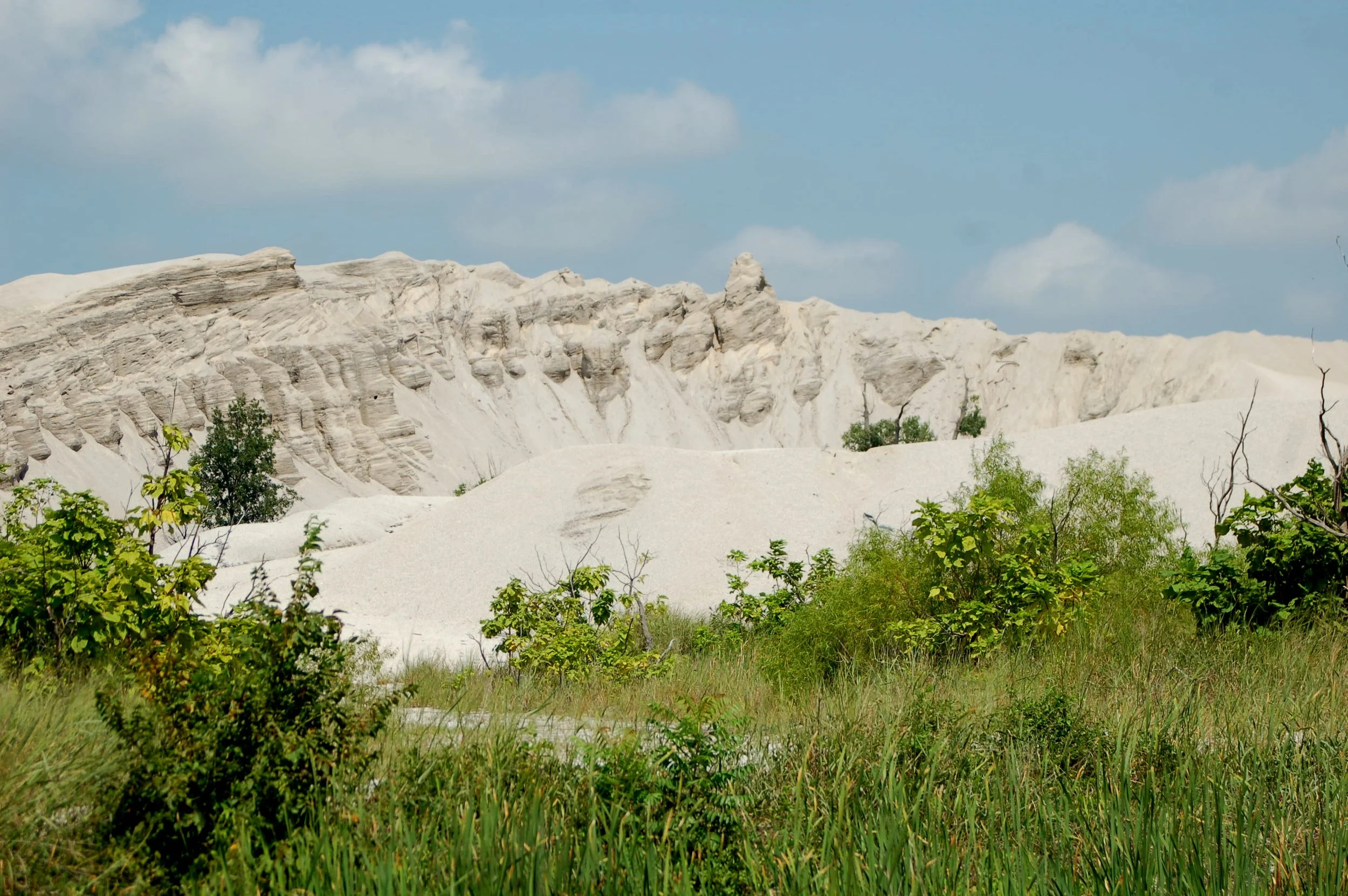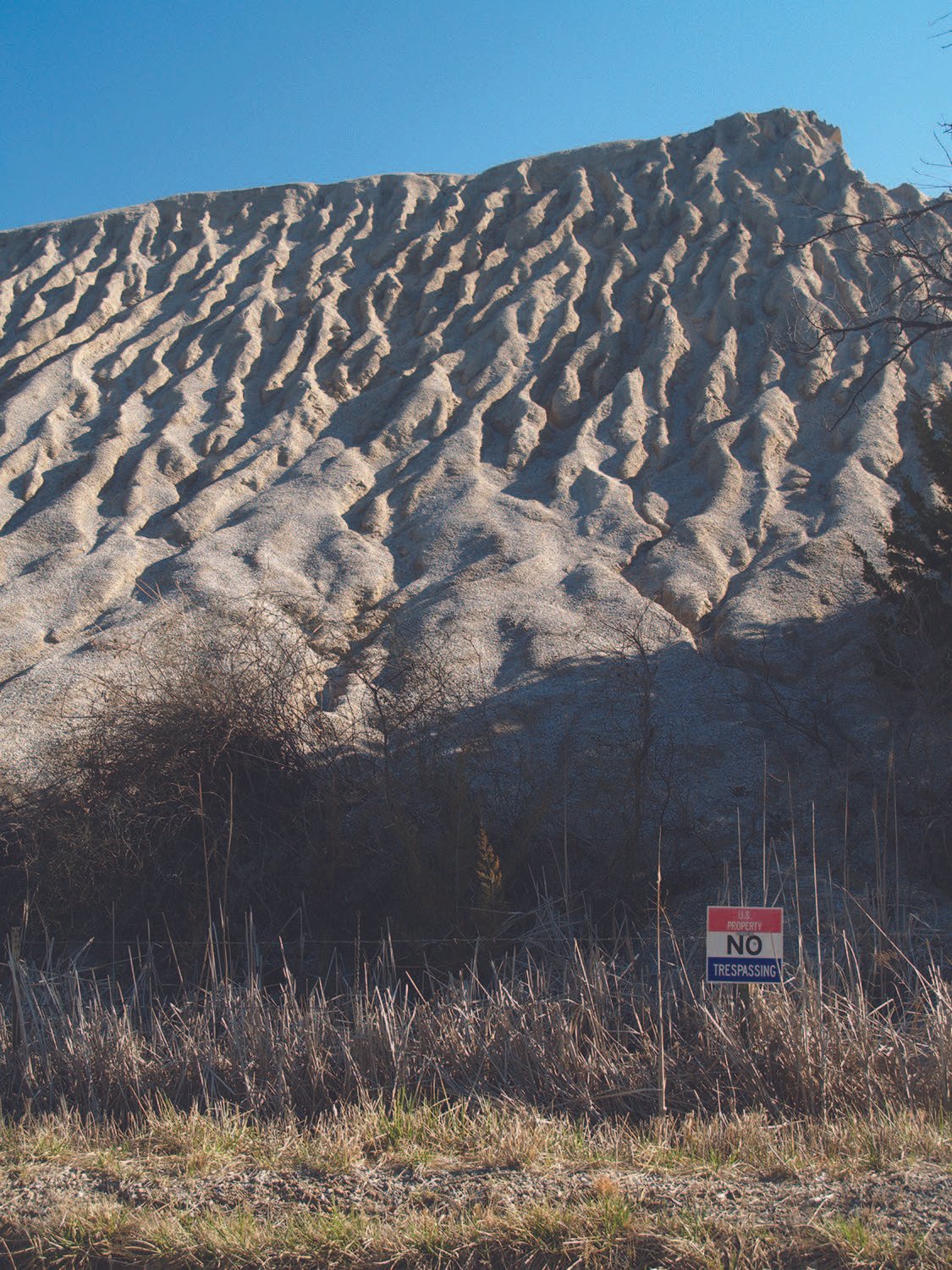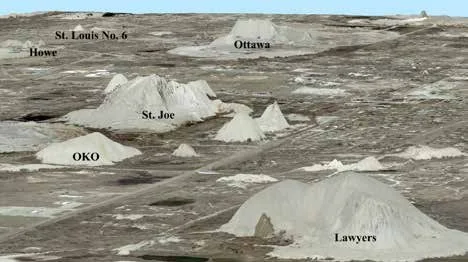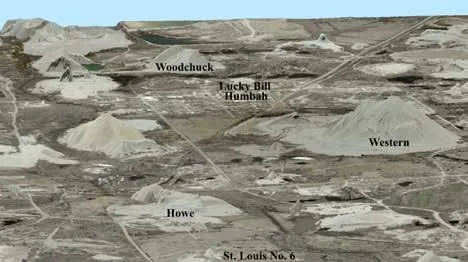
The Chat Piles of Picher, Oklahoma
Before the Buyouts:
When Picher Still Had Mountains
Before the fences and the warning signs, before the buyouts and the maps erased our hometown, we had mountains. Not the kind you find on postcards—these were made of crushed limestone, mine tailings, and everything we weren’t supposed to touch. They’re called chat piles. And they’re highly toxic. But we climbed them anyway. Named them. Conquered them barefoot. We didn’t know they were dangerous. We just knew they were ours.
This is the story of the Picher Oklahoma chat piles that made up our skyline—and what happened when the truth finally caught up.
What is a Chat Pile? The Toxic Mountains of Picher.
We used to call them mountains.
They weren’t, of course—not really. But when you’re eight years old and barefoot, staring up at a hundred-foot white ridge glittering in the sun, you don’t question it. You climb. You race. You conquer.
Picher’s skyline wasn’t shaped by office towers or water towers or trees. Ours was shaped by chat piles—massive mounds of crushed rock left over from the mines. They rose like frozen waves on the edge of town, bright as bone and just as unforgiving. In summer, they blazed hot enough to burn the soles off your feet. In winter, they iced over like arctic slopes, perfect for inner tubes, bruises, and bad decisions.
We didn’t know they were toxic. Nobody did, not really. Not back then.
We just knew they were ours.
Growing Up Barefoot on Poison
We rode bikes down their flanks, played BB gun wars on their slopes, built forts into their sides. We gave them names like they were landmarks—because to us, they were.
Sooner was the giant right beside our house. Then there was Western, Pioneer, Woodchuck, Ottawa, St. Joe, Ritz, the Lawyers pile by the old mill pond—and my favorite, Blue Goose. One only knows how that last one got its name, but it stuck, and so did the memories.
Vanishing Mountains: The LiDAR Mapping That Measured Our Memories
Years later, the government came in with planes and lasers, trying to measure the damage. They used LiDAR—fancy airborne scanning stuff—to track how much mining chat was left between 2005 and 2010. Turns out the mountains were moving.
Some weren’t just shrinking—they were literally shifting, sliding, hauled away by the truckload. Over five years, 2.3 million cubic yards of Oklahoma chat disappeared. That’s nearly 4 million tons. One hundred eighty-four thousand dump trucks worth of poison and memory.
Even mountains can vanish. Even the ones you thought would outlive you.
When the Wind Turned Deadly
At first, people thought the chat was a blessing—free gravel, pre-crushed and ready to use. They scooped it into driveways, sandboxes, even highway asphalt. Nobody thought twice.
Until the kids started getting sick.
Lead levels shot off the charts. Tar Creek turned red. The EPA came in, then the buyouts. Then the fences. Then the silence.
And still, the wind blew. It picked up dust from those piles and carried it through the yards, into the school, across the fields where we used to play football and chase frogs. We thought chat dust was dirt.
It wasn’t.
From Mining Town to Ghost Town
Now, when I go back, the chat piles are smaller. Some are gone altogether. Others are hollowed out, eaten from the inside by cleanup crews and contractors. The town’s been erased, but those white hills still linger—like broken teeth in the gums of the prairie.
Picher, Oklahoma chat piles weren’t just geological leftovers.
They were monuments. To ambition. To ignorance. To everything that made our town rise—and everything that made it fall.
Why We Still Remember
I still dream about them sometimes. The white dust in the air. The sting of a scraped knee. The way the sun caught the surface just right, like snow that might burn you alive.
They were dangerous. They were ours. Yeah, that one to the right, that was the Sooner chat pile, that one was “ours.”
And they were all beautiful.





